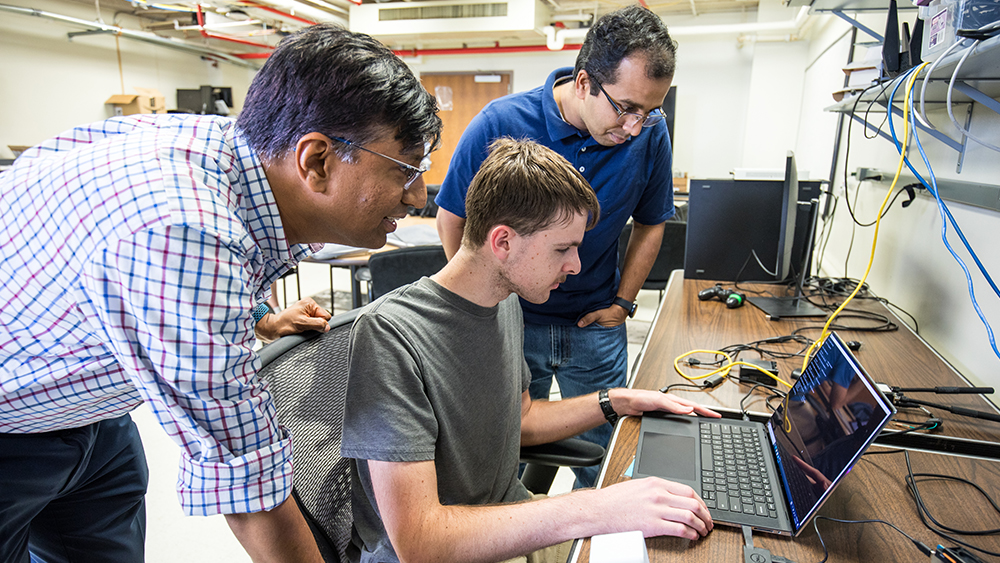
A virtual reality (VR) game crashes. A robot rolls dangerously close to the edge of a cliff. An autonomous vehicle speeds toward a pedestrian. Without intelligent control happening every millisecond, accidents can occur. This control can mean applying the brake of an autonomous vehicle to save a life or creating a more user-friendly augmented reality experience.
Two professors in the Department of Electrical and Computer Engineering at Texas A&M University are working to enhance and advance the future of mobile networks. Principal investigator Dr. Srinivas Shakkottai and co-principal investigator Dr. Dileep Kalathil recently received a National Science Foundation (NSF) grant to research EdgeRIC: Real-time radio access network intelligent control for the next generation of cellular networks.
“This project is about the next generation of cellular communication, 6G and beyond,” Shakkottai said. “In the cellular world now, many networks are not very adaptable. As time has progressed, networks are becoming much more programmable in that you can change various things such as prioritizing certain users, procuring resources people need or acquiring lower latency for various applications.”
An important aspect of this work involves wireless communication, offloading computers and wires from intelligent systems while maintaining connectivity. For example, a robot cannot move easily with weighty equipment strapped to its back, nor can a VR headset fit comfortably on a person’s head with the proportions of an oversized football helmet.
Their project, EdgeRIC, relates to the idea that computing can be in three places simultaneously: on certain devices or mobile, at the base station and in the cloud.
“If you want to take the computing equipment out and put it somewhere else on the edge of the system, you need connectivity because you can't drag a wire with you wherever you go,” Shakkottai said. “Essentially, we're saying there are intelligent systems that need the intelligence but don't want it on board. That's where these kinds of networks come into play.”
In their lab, Shakkottai and Kalathil are conducting experiments to show how EdgeRIC operates and the significance of real-time control happening every millisecond. Using laptops to simulate cell phones with 5G restrictions, they revealed that if this control were even happening every 50 milliseconds or 0.05 seconds, large amounts of throughput would be lost. Throughput is how much information the communication network can process at one time.
“We want to provide service to the right individual at the right time, to give them the quality that they desire,” Shakkottai said. “We built microapps, small applications running on the edge of the system, which work at microsecond latencies. They give service as quickly as possible to specific users. So essentially, it will give you more throughput, or situational awareness if you need it, now.”
Some preliminary work was conducted at the Texas A&M-RELLIS campus. Shakkottai put radios on drones to examine channel qualities over time to determine the importance of real-time control.
“That facility is extremely valuable in that it gives us a space to conduct wireless autonomy experiments at large scales,” Shakkottai said. “In other words, we have base stations up there where we can put up radios and do various experiments, and that's unique to Texas A&M.”
Joining the project is Dr. Dinesh Bharadia, an associate professor from the University of California San Diego and an adjunct professor at Texas A&M. Bharadia has a strong background in wireless communication systems.
“We are always interested in developing new technologies that can improve the communication networks as a whole, which has been the main theme of the collaboration between us,” Kalathil said. “This project is essentially a recent effort for us to further improve the communication network.”